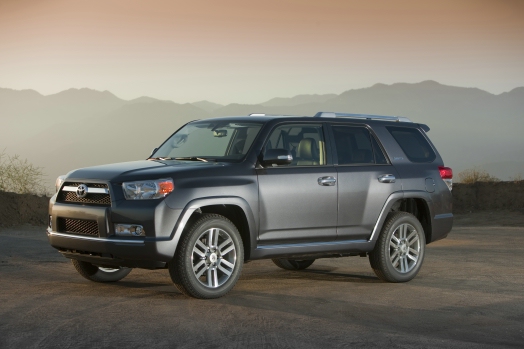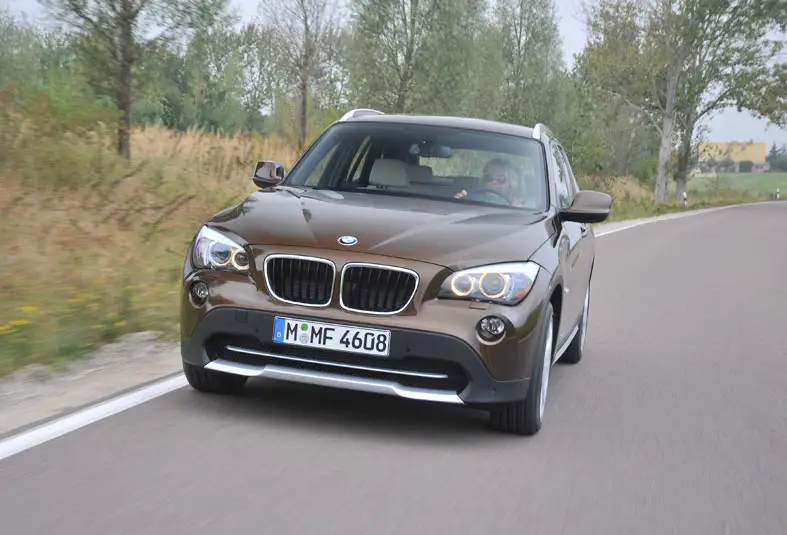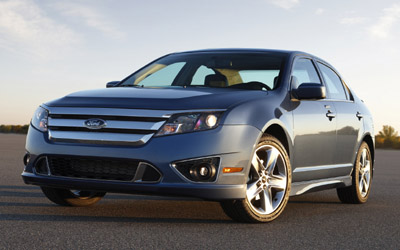
Adjustments on Tacoma and Prius
TORRANCE, Calif., Sept. 25, 2009 Toyota Motor Sales (TMS), USA, Inc., announced new manufacturer's suggested retail prices (MSRP) today for the all-new 2010 4Runner sport utility vehicle (SUV), 2010 Land Cruiser full-size SUV and Venza sedan. MSRP adjustments were also announced for the 2010 Prius hybrid and Tacoma pickup truck.
4Runner
Prices for the all-new fifth-generation 4Runner will range from $27,500 for the SR5 grade 4x2 with a four-cylinder engine to $39,800 for the Limited grade 4x4 V6. The pricing represents an excellent value as 4Runner starts with a price point more than $1,000 less than the current generation's lowest price model. The MSRP of the most popular selling 4Runner, the SR5 4x4 V6, will remain the same as the previous generation at $30,915 even though it receives more than $1,700 in added equipment. Value is further enhanced on all 4Runner grades with an array of performance, safety and convenience upgrades.
The fifth-generation 4Runner is even more rugged and athletic, packed with more power and better mileage. A completely redesigned interior and unique cargo area make the newest 4Runner smarter, more comfortable, and more versatile than ever.
The 2010 4Runner will be offered in three grades: the top-of-the-line Limited, value based yet well-equipped SR5, and an all-new Trail grade aimed at outdoor adventurers who require maximum off-road capability.
The design strategy for the new 4Runner emphasizes a more rugged, powerful stance. Large diameter wheels and tires were added to not only improve off-road performance, but also enhance the 4Runner's truck-based characteristics. Unique aluminum alloy wheels are 17-inches in diameter on SR5 and Trail grades and 20-inches on the Limited, and include a full size spare. Three new colors include Shoreline Blue Pearl, Magnetic Gray Metallic and Classic Silver Metallic.
The 2010 4Runner is powered by a new 4.0-liter V6, which now generates 270 horsepower and 278 lb-ft of torque. Through the use of advanced engine management that includes dual independent Variable Valve Timing with intelligence (VVT-i), the new 4.0-liter engine offers the best of both worlds, adding more power while improving efficiency. For 2010, the new V6 engine produces 34 horsepower more than the prior V6 and 10 horsepower more than the optional V8 of the previous generation.
In addition to the upgraded V6 engine, a proven 2.7-liter four-cylinder engine with VVT-i is available on the 4x2 SR5 model. The gutsy DOHC, 16-valve 2.7 makes 157 horsepower and 178 lb-ft of torque. Mated to a four-speed automatic transmission, the 2.7 delivers 18 city/23 highway mpg.
Building on its rugged off-road heritage, the new 4Runner offers enhancements to proven off-road equipment found on Land Cruiser and FJ Cruiser. To enhance grip, the Active Traction Control (A-TRAC) system is now standard on all 4x4 models. Downhill Assist Control (DAC) is also standard on SR5 and Limited 4x4 models, and Hill-Start Assist Control (HAC) is standard on all V6 models.
An array of advanced features, formerly only available in the Land Cruiser, further boosts off-highway capabilities. Toyota's Crawl Control (CRAWL) feature is standard on the Trail grade. CRAWL is an adjustable electro-mechanical system that can be tuned to match the terrain by selecting any of five speed levels. The system maintains an appropriate speed that keeps the vehicle under control and minimizes the load on drivetrain and suspension components. The CRAWL feature helps make traversing difficult terrain easier and safer.
The Trail grade also features a Multi-Terrain Select system, which allows the 4x4 operator to dial in wheel-slip control to match the terrain. In loose terrain such as mud and sand, more-than-normal wheel slip is permitted, allowing wheel-spin to work in the vehicle's favor. On bumpy moguls, or solid rock, wheel slip is minimized and the system acts more like a limited slip. The Mogul setting is for extremely uneven terrain, such as V-ditches, slopes, and up- or down-hill ridges.
Also, offered as an option on the Trail grade is Toyota's Kinetic Dynamic Suspension System (KDSS). KDSS radically improves terrain-following ability by disconnecting stabilizer bars to allow for more axle travel and better suspension articulation in slow, difficult terrain.
Safety is enhanced with the addition of standard driver and front-passenger knee airbags, bringing the total number of standard airbag systems to eight. Additional airbags include front and side-mounted airbags for the driver and front passenger, and side curtain airbags for all three rows. The 4Runner Limited will come standard with Toyota's all-new telematics service, Safety Connect(TM). The Safety Connect system provides four safety and security features: Automatic Collision Notification, Stolen Vehicle Location, Emergency Assistance Button (SOS) and Roadside Assistance. A one-year trial subscription is included on new vehicle purchases equipped with Safety Connect.
Comfort and convenience is enhanced with increased interior space, a 40/20/40 split reclining and fold flat second-row seat. A 50/50-split third-row, which folds flat in the floor, is also available on SR5 and Limited grades. Standard on the Limited grade is a dual-zone digital automatic climate control and an enhanced X-REAS suspension system.
Also added to the 4Runner is a sliding rear cargo deck that supports up to 440 pounds, an ideal feature for easier cargo hauling or setting up a tailgate party. A "Party Mode" button that raises audio systems bass and transfers equalization to the rear of the vehicle further optimizes tailgating activities. An integrated XM Satellite Radio that includes a 90-day trial subscription is standard on Trail and Limited audio systems.
The 2010 4Runner equipped with the V6 will begin arriving at dealerships in late October/early November. The 4x2 SR5 model with the 2.7-liter L4 will arrive in early January 2010.
Venza
The 2010 Venza will carry a base MSRP that will range from $26,275 for the four-cylinder front-wheel-drive model to $29,550 for the all-wheel-drive V6, reflecting an increase of $300, or an average of 1.1 percent. The Venza adds a USB port for iPod connectivity, hands-free phone capability and music streaming via Bluetooth wireless technology as standard equipment on all audio systems. The USB port allows the user to control the iPod through the Venza's audio unit and steering wheel controls.
The 2010 Venza will begin arriving at dealerships in early November.
Land Cruiser
The 2010 Land Cruiser will carry a base MSRP of $65,970, an increase of $1,215, or 1.9 percent. For 2010, Land Cruiser will come standard with Toyota's Safety Connect(TM) system. The Land Cruiser audio system adds a standard USB port for iPod connectivity through an auxiliary music source, and Bluetooth wireless technology. More changes for 2010 include grey factory privacy glass tint added to the rear hatch and rain-sensing windshield wipers
Land Cruiser will begin arriving at Toyota dealerships in late October.
Tacoma
All 2010 Tacoma pickup trucks will receive a price adjustment increase of $175, or an average of 0.8 percent. The base MSRP will range from $15,345 for the Regular Cab four-cylinder 4x2 with a five-speed manual transmission to $27,250 for the Double Cab long bed 4x4 V6 with a five-speed automatic. The new MSRPs will become effective on November 2, 2009.
Prius
The base MSRP on 2010 Prius models II, III, IV and V will be adjusted to reflect an increase of $400, or an average of 1.6 percent. Base prices for the Prius will range from $22,400 for the Prius II to $27,670 for the Prius V. The new Prius MSRPs will take effect with all U.S. port arrivals on or after October 18, 2009.
Pricing for the Prius I model, which will now be made available in limited quantities to fleet buyers, will remain unchanged at $21,000. The Prius I model will come equipped with all of the standard features of Prius II, less: Cruise Control, Touch Tracer Display, Smart Key, EV mode, a rear wiper, rear tonneau cover, heated side mirrors, satellite radio antenna and satellite capable radio, rear armrest with two cup holders, two rear-door speakers, rear heater duct, passenger-seatback pocket, foldable rear headrests and underbody spoilers and spats.
Toyota MSRPs do not include a delivery, processing and handling (DPH) fee of $750 for passenger cars and $800 for light trucks. DPH fee for vehicles distributed by Southeast Toyota (SET) and Gulf States Toyota (GST) may vary.
Public Web site: http://www.toyota.com/
All prices listed above exclude the Delivery, Processing, and Handling Fee (DPH).
(Logo: http://www.newscom.com/cgi-bin/prnh/20030501/TOYLOGO)
Vehicle/
Model Body MSRP NEW MSRP %
Number Grade Doors Style Trans Increase MSRP Increase
-------- ----- ----- ----- ----- -------- ---- --------
PRIUS
-----
1223 II 5 Hatchback CVT $400 $22,400 1.8%
1225 III 5 Hatchback CVT $400 $23,400 1.7%
1227 IV 5 Hatchback CVT $400 $26,200 1.6%
1229 V 5 Hatchback CVT $400 $27,670 1.5%
VENZA
-----
2810 L4 FWD 5 Sedan 6AT $300 $26,275 1.2%
2812 V6 FWD 5 Sedan 6AT $300 $28,100 1.1%
2820 L4 AWD 5 Sedan 6AT $300 $27,725 1.1%
2822 V6 AWD 5 Sedan 6AT $300 $29,550 1.0%
4RUNNER
-------
8630 SR5 L4 2WD 4 SUV 4AT N/A $27,500 N/A
8642 SR5 V6 2WD 4 SUV 5AT N/A $29,175 N/A
8648 Limited V6 2WD 4 SUV 5AT N/A $37,765 N/A
8664 SR5 V6 4WD 4 SUV 5AT N/A $30,915 N/A
8670 Trail V6 4WD 4 SUV 5AT N/A $35,700 N/A
8668 Limited V6 4WD 4 SUV 5AT N/A $39,800 N/A
LAND CRUISER
------------
6156 4WD 4 SUV 6AT $1,215 $65,970 1.9%
TACOMA 4x2
----------
7103 L4 2 Reg Cab 5MT $175 $15,345 1.2%
7104 L4 2 Reg Cab 4AT $175 $16,245 1.1%
7113 L4 4 Access Cab 5MT $175 $19,380 0.9%
7114 L4 4 Access Cab 4AT $175 $20,280 0.9%
7153 X-Runner V6 4 Access Cab 6MT $175 $25,460 0.7%
7131 PreRunner L4 2 Reg Cab 5MT $175 $16,230 1.1%
7161 PreRunner L4 4 Access Cab 5MT $175 $20,140 0.9%
7163 PreRunner V6 4 Access Cab 6MT $175 $21,595 0.8%
7164 PreRunner V6 4 Access Cab 5AT $175 $22,475 0.8%
7188 PreRunner V6 4 Double Cab 5AT $175 $23,675 0.7%
7190 PreRunner LB V6 4 Double Cab 5AT $175 $24,175 0.7%
TACOMA 4x4
----------
7503 L4 2 Reg Cab 5MT $175 $19,305 0.9%
7513 L4 4 Access Cab 5MT $175 $23,215 0.8%
7553 V6 4 Access Cab 6MT $175 $24,770 0.7%
7554 V6 4 Access Cab 5AT $175 $25,650 0.7%
7593 V6 4 Double Cab 6MT $175 $25,870 0.7%
7594 V6 4 Double Cab 5AT $175 $26,750 0.7%
7596 LB V6 4 Double Cab 5AT $175 $27,250 0.6%




















